Science & Environment
Certain quantum systems may be able to defy entropy’s effects forever


Some quantum systems may resist an effect of entropy called thermalisation
Giroscience / Science Photo Library
The fundamental laws of physics insist that no patterns can permanently survive nature’s steady course towards disorder – or can they? A new proof offers a peculiar counterexample to the once-settled notion that all collections of particles must eventually succumb to entropy.
“Our result might seem quite surprising,” says Andrew Lucas at the University of Colorado. But his team’s finding is actually the most recent entry in a decades-long debate over whether quantum particles can maintain certain properties forever.
Science & Environment
Fear is the stock killer

Traders work on the floor of the New York Stock Exchange during afternoon trading on October 03, 2024 in New York City.
Michael M. Santiago | Getty Images
This report is from today’s CNBC Daily Open, our international markets newsletter. CNBC Daily Open brings investors up to speed on everything they need to know, no matter where they are. Like what you see? You can subscribe here.
What you need to know today
Stocks slumped on persistent fears
Major U.S. indexes retreated on Monday. The S&P 500 lost 0.96%, the Dow Jones Industrial Average dropped 0.94% and the Nasdaq Composite slumped 1.18%. But Super Micro shares were a bright spot, jumping 15.8%. Europe’s regional Stoxx 600 index added 0.18%. Household goods led gains, closing 0.97% higher, while tech shares fell 0.65%.
No more jumbo cuts
After last week’s expectation-busting jobs report for September, there’s virtually zero chance the U.S. Federal Reserve will reduce interest rates by half a percentage point at its next meeting, strategists told CNBC. Traders agree. A week ago, they bet on a 34.7% chance of another jumbo cut by the Fed; today, it’s 0%, according to the CME FedWatch Tool.
AI demand is still high
The artificial intelligence boom “still has some time to go,” Foxconn Chief Executive and Chairman of Foxconn Young Liu told CNBC. Foxconn, which reported better-than-expected earnings for the third quarter, manufactures electronics for technology giants like Apple and Nvidia. Demand for Nvidia’s latest chip Blackwell is “much better than we thought,” said Liu.
Tensions push oil prices higher
Oil prices jumped around 3.7% on Monday on worries Israel will attack Iran’s oil production facilities. If Israel hits Kharg Island, it could disrupt the transport of 90% of Iran’s crude exports, said an analyst. Last week was the best for West Texas Intermediate and Brent oil prices in more than one-and-a-half years. They surged 9.1% and 8.4% respectively.
[PRO] Goldman’s getting more bullish
The S&P 500 is in the red in October so far. But Goldman Sachs raised its 2024 target for the S&P to 6,000 from 5,600, making it the second-highest forecast on Wall Street, according to the CNBC Market Strategist Survey. Goldman also increased its 12-month S&P target to 6,300 from 6,000. Here’s why the bank is so bullish on stocks.
The bottom line
September’s blockbuster jobs report, released Friday, lifted sentiment and stocks enough that major indexes reversed their losses and ended last week in the green, but just barely.
That halo has now faded away. Markets are back to contending with rising oil prices, inflation possibly reaccelerating, fewer-than-expected rate cuts and potentially even a distant recession.
Oil prices spiked yesterday after having their best week in over a year. And September’s blockbuster jobs report, the futures market is pricing in a 13.7% chance the Fed will not cut rates at all at its November meeting. That’s a drastic change from a week ago when traders thought there was a 34.7% chance of a 50-basis-point cut.
But a recession?
Admittedly, that’s speculation on my part. But it bears pointing out that the yield curve between the 10- and 2-year Treasurys is “getting close to flipping back into danger territory,” as CNBC’s Jeff Cox noted.
Simply put, when the 10-year yield is lower than that of the 2-year, the yield curve is inverted – which has almost always preceded a recession since the mid-1970s. The yield curve inverted in early July 2022 and normalized in early September.
After Monday, however, the gap between the 10- and 2-year yields is now just 3.5 basis points. It’s not inconceivable, then, for investors who take stock in what the yield curve signals to panic a little.
That said, strategists think a recession is a far-fetched idea, considering the health of the U.S. economy.
As David Roche, founder and strategist at Quantum Strategy, put it, “the economy is fine, thank you very much.”
So much so that “the probability of the American economy going into recession, at least in the fourth quarter of this year, and probably in the first quarter of next year, is close to zero,” said Bob Parker, senior advisor at the International Capital Markets Association.
Concrete numbers are driving market movement. But there’s an undercurrent of fear that can perhaps run contrary to what some of those numbers are saying.
– CNBC’s, Jeff Cox, Lisa Kailai Han and Jesse Pound contributed to this story.
Science & Environment
MicroRNA discovery in worms leads to Nobel Prize in medicine
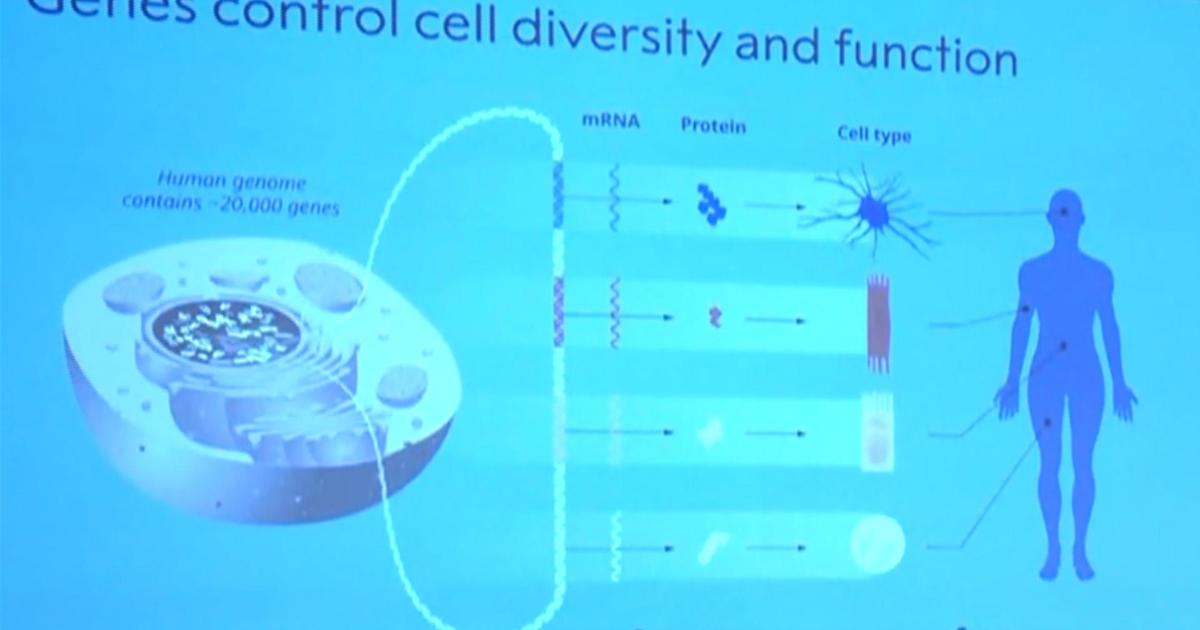
Watch CBS News
Be the first to know
Get browser notifications for breaking news, live events, and exclusive reporting.
Science & Environment
My pilgrimage to Scotland’s vanishing snow patch
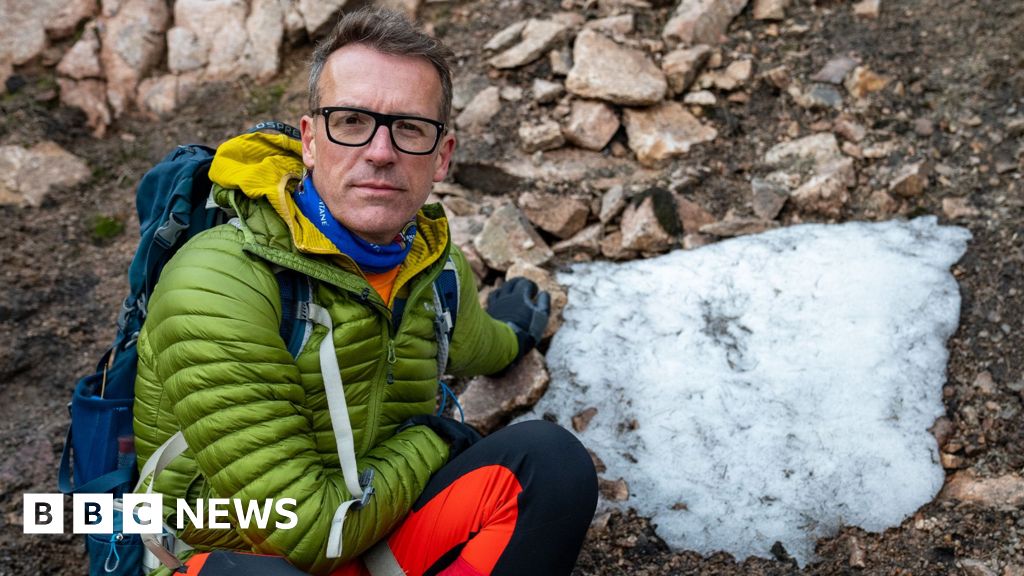
The Sphinx, a patch of snow believed to be the longest-lasting in the UK, has melted for the fourth consecutive year.
Iain Cameron has spent decades surveying the patch, hidden in one of the most isolated parts of Scotland’s Cairngorms.
Describing his work as “citizen science”, Iain and other experts document areas of snow across the country and share their findings with the Royal Meteorological Society.
The patch was thought to be a permanent fixture in the Scottish landscape – researchers attribute its recent melting to the effects of climate change.
Video by Danielle Fleming and Morgan Spence
Science & Environment
FTX bankruptcy judge approves more than $14 billion payback plan

Nearly two years after FTX spiraled into bankruptcy, a Delaware judge approved the company’s reorganization plan, which involves paying out more than $14 billion to customers of the collapsed cryptocurrency exchange.
“Looking ahead, we are poised to return 100% of bankruptcy claim amounts plus interest for non-governmental creditors through what will be the largest and most complex bankruptcy estate asset distribution in history,” said John Ray, who took over as FTX CEO following the company’s bankruptcy filing in late 2022, in a statement on Monday.
Ray, who also shepherded Enron through bankruptcy, added that the estate is working to finalize arrangements to make distributions to creditors around the world.
The company says it has collected between $14.7 billion and $16.5 billion worth of property for distribution. FTX previously estimated that it owes creditors around $11.2 billion.
According to the plan approved by Delaware bankruptcy Judge John Dorsey, 98% of FTX’s creditors will get 119% of the amount of their allowed claim as of November 2022, when the exchange filed for bankruptcy protection.
The price of bitcoin is up roughly 260% since FTX’s failure. FTX raised the money by selling a number of assets, including venture investments held by the exchange and other investments held by Alameda Research, Bankman-Fried’s crypto hedge fund.
One of FTX’s most high-profile investments was in artificial intelligence startup Anthropic, which is backed by Amazon. FTX sold most of its stake in Anthropic this year for nearly $900 million.
The bankruptcy estate says it will make a separate announcement about the date the payout plan will go into effect and when it anticipates the start of distributions.
FTX founder Sam Bankman-Fried was convicted of seven criminal counts last November, including charges related to stealing billions of dollars from FTX’s customers. He received a 25-year prison sentence.
WATCH: Caroline Ellison sentenced to two years in prison for role in FTX collapse

Science & Environment
Daniele Oriti: The physicist who argues that there are no objective laws of physics


Most physicists operate under the assumption that there is a world out there that is entirely independent of us, an objective reality in which more-or-less well-defined things behave according to immutable physical laws. Yet over the past century, ever since the development of quantum theory, there have been discombobulating questions about the role of observers – not least ourselves – in the makings of reality.
These questions are often brushed under the carpet, but Daniele Oriti, a theorist at the Complutense University of Madrid, prefers to confront them. Arguably, he has been pushed to do so by his work on one of the foremost challenges in modern physics: creating a quantum theory of gravity. The difficulty here is reconciling the inherently smooth picture of space-time in general relativity with quantum theory, which is written in contradictory mathematical language. Getting the two to play nicely together has forced Oriti to think deeply about the subtleties of physical laws – not least the fact that space-time is a shaky foundation on which to build them. His verdict? That physical laws can’t exist independently of us, as something that we can all agree on, but instead reside within us somehow.
Oriti spoke to New Scientist about how he came to such a startling conclusion, why physicists need to be more aware of the complex relations between the world, scientific models and observers, and how appreciating the true nature of physical laws might yield fresh breakthroughs.
Thomas Lewton: What do people get wrong about the nature of reality?
Daniele Oriti: At the risk of…
Science & Environment
SpaceX launches European asteroid probe as hurricane weather closes in
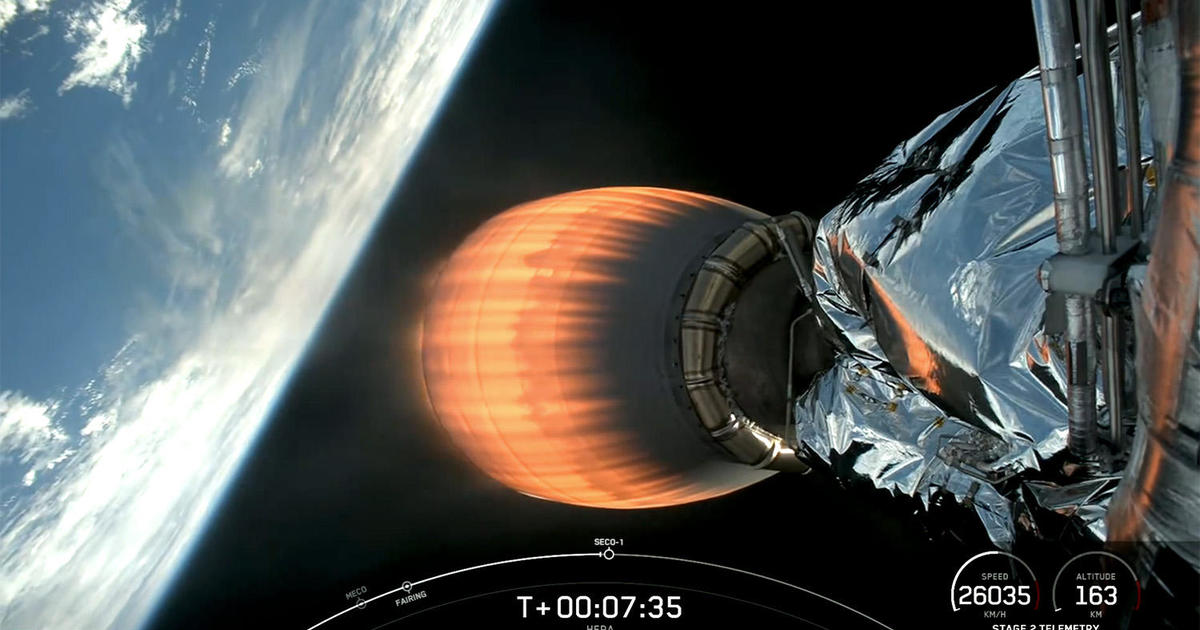
Dodging stormy weather ahead of Hurricane Milton, SpaceX launched the European Space Agency’s $398 million Hera probe Monday on a follow-up flight to find out precisely how a moonlet orbiting a small asteroid was affected by the high-speed impact of NASA’s DART probe in 2022.
The launching was in doubt until the last moment, with thick clouds and rain across Florida’s Space Coast, fueled by moisture pulled in by the intensifying hurricane to the west.
But as the launch time approached, conditions improved enough to satisfy launch safety rules and NASA managers cleared the rocket for takeoff. Right on time, at 10:52 a.m. EDT, the Falcon 9’s first stage engines ignited with a burst of flame and the booster climbed smoothly away from the Cape Canaveral Space Force Station.
Liftoff came in the nick of time for several hundred European Space Agency managers, scientists, engineers and journalists who flew to Florida to watch the launch.
Hurricane Milton is expected to bring extreme winds and torrential rain to Florida’s Space Coast by Wednesday, a forecast that prompted NASA to stand down on plans to launch the agency’s $5.2 billion Europa mission to Jupiter and its ice-covered moon Europa on Thursday.
Instead, NASA announced late Sunday the rocket and it costly payload will remain in a SpaceX hangar at the base of launch pad 39A at the Kennedy Space Center until Milton passes by and safety personnel have a chance to inspect spaceport facilities for signs of damage.
The weather also has thrown a wrench into NASA’s plans to bring three NASA astronauts and a Russian cosmonaut back to Earth after a 217-day stay aboard the International Space Station.
Crew 8 commander Matthew Dominick, Mike Barratt, Jeanette Epps and cosmonaut Alexander Grebenkin had planned to undock Monday.
But NASA announced Sunday their departure would be delayed to at least Thursday because of the expected bad weather. Crew Dragon ferry ships require calm winds and seas in the Gulf of Mexico or the Atlantic Ocean to permit a safe splashdown.
Mission to an asteroid and its moon
In the meantime, despite an initially grim forecast, SpaceX was able to take advantage of a break in the weather to kick off Hera’s two-year voyage to the asteroid Didymos and its small moon Dimorphos.
The DART impact altered the 11-hour 55-minute orbit of the 495-foot-wide Dimorphos, shaving 31 minutes off the time needed to complete one trip around the parent asteroid Didymos. The test confirmed the feasibility of someday nudging a threatening asteroid off course before a possibly devastating Earth impact.
But a successful deflection would depend on a variety of factors, including when the threat was detected — the farther out, the better — and the asteroid’s composition.
ESA’s Hera probe will orbit the Didymos system and study both asteroids in detail with 11 high-tech cameras and other instruments, deploying two small “cubesat” satellites to study the interior structure of Dimorphos, assess the DART impact crater, the moon’s internal structure and composition.
The goal of the Asteroid Impact and Deflection Assessment, or AIDA, is to better understand the techniques that might be needed to prevent an Earth impact.
“The good news is no dinosaur killer is on its way to Earth during the next 100 years,” said
Richard Moissl, director of ESA’s Planetary Defense Office. “We are safe from that scenario, but there are smaller ones, especially in this dangerous size, 50 meters and upwards, where it really threatens human life on the ground.”
The first step in planetary defense is detection, he said, followed by detailed observations to pin down the asteroid’s orbit and determine whether a collision with Earth is a possibility.
“For small objects, civil protection is the way to go,” he said. “But 50 meters (160 feet across) and larger, you really want this thing not to hit Earth, not to threaten population centers. And then step three comes into play, deflection.
“But again, it’s always good to know what you’re up against. And this is where Hera and DART come into play.”
Unlike most Falcon 9 flights, there were no plans to recover the rocket’s first stage. To give Hera the velocity need to break free of Earth gravity, the Falcon 9’s two stages were programmed to use up all of their propellants, leaving none in reserve for a powered first stage landing.
The flight plan called for two firings of the upper stage engine before Hera’s release to fly on its own one hour and 16 minutes after liftoff.
To reach Didymos and Dimorphos, Hera will have to execute a deep space thruster firing in November to set up a gravity-assist flyby of Mars in March, sailing within about 3,700 miles of the red planet. Along the way, the spacecraft will pass within 620 miles of the small martian moon Deimos.
“By swinging through the gravitational field of Mars in its direction of movement, the spacecraft gains added velocity for its onward journey,” Michael Kueppers, ESA’s project scientist, said on the agency’s website.
“This close encounter is not part of Hera’s core mission, but we will have several of our science instruments activated anyway. It gives us another chance to calibrate our instruments and potentially to make some scientific discoveries.”
After another deep space maneuver in February 2026, Hera will finally be on course to slip into orbit around Didymos the following October. The mission is expected to last about six months.
-

 Womens Workouts2 weeks ago
Womens Workouts2 weeks ago3 Day Full Body Women’s Dumbbell Only Workout
-

 Science & Environment3 weeks ago
Science & Environment3 weeks agoHow to unsnarl a tangle of threads, according to physics
-

 Science & Environment3 weeks ago
Science & Environment3 weeks agoHyperelastic gel is one of the stretchiest materials known to science
-

 Technology3 weeks ago
Technology3 weeks agoWould-be reality TV contestants ‘not looking real’
-

 Science & Environment3 weeks ago
Science & Environment3 weeks agoMaxwell’s demon charges quantum batteries inside of a quantum computer
-

 Science & Environment3 weeks ago
Science & Environment3 weeks ago‘Running of the bulls’ festival crowds move like charged particles
-

 News2 weeks ago
News2 weeks agoOur millionaire neighbour blocks us from using public footpath & screams at us in street.. it’s like living in a WARZONE – WordupNews
-
News3 weeks ago
the pick of new debut fiction
-

 Science & Environment3 weeks ago
Science & Environment3 weeks agoHow to wrap your mind around the real multiverse
-

 Science & Environment3 weeks ago
Science & Environment3 weeks agoSunlight-trapping device can generate temperatures over 1000°C
-

 Science & Environment3 weeks ago
Science & Environment3 weeks agoQuantum ‘supersolid’ matter stirred using magnets
-

 Science & Environment3 weeks ago
Science & Environment3 weeks agoITER: Is the world’s biggest fusion experiment dead after new delay to 2035?
-

 Science & Environment3 weeks ago
Science & Environment3 weeks agoLiquid crystals could improve quantum communication devices
-

 Science & Environment3 weeks ago
Science & Environment3 weeks agoQuantum forces used to automatically assemble tiny device
-

 Science & Environment3 weeks ago
Science & Environment3 weeks agoPhysicists are grappling with their own reproducibility crisis
-

 Science & Environment3 weeks ago
Science & Environment3 weeks agoWhy this is a golden age for life to thrive across the universe
-

 News3 weeks ago
News3 weeks agoYou’re a Hypocrite, And So Am I
-

 Sport3 weeks ago
Sport3 weeks agoJoshua vs Dubois: Chris Eubank Jr says ‘AJ’ could beat Tyson Fury and any other heavyweight in the world
-

 Science & Environment3 weeks ago
Science & Environment3 weeks agoTime travel sci-fi novel is a rip-roaringly good thought experiment
-

 Science & Environment3 weeks ago
Science & Environment3 weeks agoLaser helps turn an electron into a coil of mass and charge
-

 Science & Environment3 weeks ago
Science & Environment3 weeks agoCaroline Ellison aims to duck prison sentence for role in FTX collapse
-

 Science & Environment3 weeks ago
Science & Environment3 weeks agoNuclear fusion experiment overcomes two key operating hurdles
-
Business1 week ago
Eurosceptic Andrej Babiš eyes return to power in Czech Republic
-

 Technology1 week ago
Technology1 week ago‘From a toaster to a server’: UK startup promises 5x ‘speed up without changing a line of code’ as it plans to take on Nvidia, AMD in the generative AI battlefield
-

 Football1 week ago
Football1 week agoFootball Focus: Martin Keown on Liverpool’s Alisson Becker
-

 Science & Environment3 weeks ago
Science & Environment3 weeks agoRethinking space and time could let us do away with dark matter
-

 Science & Environment3 weeks ago
Science & Environment3 weeks agoNerve fibres in the brain could generate quantum entanglement
-

 News3 weeks ago
News3 weeks ago▶️ Hamas in the West Bank: Rising Support and Deadly Attacks You Might Not Know About
-

 MMA1 week ago
MMA1 week agoConor McGregor challenges ‘woeful’ Belal Muhammad, tells Ilia Topuria it’s ‘on sight’
-

 News3 weeks ago
News3 weeks ago▶️ Media Bias: How They Spin Attack on Hezbollah and Ignore the Reality
-

 News3 weeks ago
News3 weeks agoNew investigation ordered into ‘doorstep murder’ of Alistair Wilson
-

 Science & Environment2 weeks ago
Science & Environment2 weeks agoX-rays reveal half-billion-year-old insect ancestor
-
Business1 week ago
Should London’s tax exiles head for Spain, Italy . . . or Wales?
-

 News3 weeks ago
News3 weeks agoIsrael strikes Lebanese targets as Hizbollah chief warns of ‘red lines’ crossed
-

 Science & Environment3 weeks ago
Science & Environment3 weeks agoA slight curve helps rocks make the biggest splash
-

 Science & Environment3 weeks ago
Science & Environment3 weeks agoFuture of fusion: How the UK’s JET reactor paved the way for ITER
-

 Science & Environment3 weeks ago
Science & Environment3 weeks agoA new kind of experiment at the Large Hadron Collider could unravel quantum reality
-

 Science & Environment3 weeks ago
Science & Environment3 weeks agoUK spurns European invitation to join ITER nuclear fusion project
-

 CryptoCurrency3 weeks ago
CryptoCurrency3 weeks agoCardano founder to meet Argentina president Javier Milei
-

 News2 weeks ago
News2 weeks agoWhy Is Everyone Excited About These Smart Insoles?
-

 Science & Environment2 weeks ago
Science & Environment2 weeks agoMeet the world's first female male model | 7.30
-

 Technology2 weeks ago
Technology2 weeks agoGet ready for Meta Connect
-

 Health & fitness1 week ago
Health & fitness1 week agoThe 7 lifestyle habits you can stop now for a slimmer face by next week
-

 Science & Environment3 weeks ago
Science & Environment3 weeks agoWhy we need to invoke philosophy to judge bizarre concepts in science
-

 CryptoCurrency3 weeks ago
CryptoCurrency3 weeks agoLow users, sex predators kill Korean metaverses, 3AC sues Terra: Asia Express
-

 Womens Workouts2 weeks ago
Womens Workouts2 weeks agoBest Exercises if You Want to Build a Great Physique
-

 Womens Workouts2 weeks ago
Womens Workouts2 weeks agoEverything a Beginner Needs to Know About Squatting
-

 News2 weeks ago
News2 weeks agoFour dead & 18 injured in horror mass shooting with victims ‘caught in crossfire’ as cops hunt multiple gunmen
-

 Technology2 weeks ago
Technology2 weeks agoRobo-tuna reveals how foldable fins help the speedy fish manoeuvre
-

 Technology1 week ago
Technology1 week agoQuantum computers may work better when they ignore causality
-

 CryptoCurrency3 weeks ago
CryptoCurrency3 weeks agoEthereum is a 'contrarian bet' into 2025, says Bitwise exec
-

 Health & fitness3 weeks ago
Health & fitness3 weeks agoThe secret to a six pack – and how to keep your washboard abs in 2022
-
Business3 weeks ago
JPMorgan in talks to take over Apple credit card from Goldman Sachs
-

 Science & Environment3 weeks ago
Science & Environment3 weeks agoQuantum time travel: The experiment to ‘send a particle into the past’
-

 Science & Environment3 weeks ago
Science & Environment3 weeks agoBeing in two places at once could make a quantum battery charge faster
-

 Science & Environment3 weeks ago
Science & Environment3 weeks agoA tale of two mysteries: ghostly neutrinos and the proton decay puzzle
-

 CryptoCurrency3 weeks ago
CryptoCurrency3 weeks agoBitcoin miners steamrolled after electricity thefts, exchange ‘closure’ scam: Asia Express
-

 CryptoCurrency3 weeks ago
CryptoCurrency3 weeks agoDorsey’s ‘marketplace of algorithms’ could fix social media… so why hasn’t it?
-

 CryptoCurrency3 weeks ago
CryptoCurrency3 weeks agoDZ Bank partners with Boerse Stuttgart for crypto trading
-

 CryptoCurrency3 weeks ago
CryptoCurrency3 weeks agoBitcoin bulls target $64K BTC price hurdle as US stocks eye new record
-

 CryptoCurrency3 weeks ago
CryptoCurrency3 weeks agoBlockdaemon mulls 2026 IPO: Report
-
News3 weeks ago
The Project Censored Newsletter – May 2024
-
Politics3 weeks ago
UK consumer confidence falls sharply amid fears of ‘painful’ budget | Economics
-

 TV2 weeks ago
TV2 weeks agoCNN TÜRK – 🔴 Canlı Yayın ᴴᴰ – Canlı TV izle
-

 Science & Environment2 weeks ago
Science & Environment2 weeks agoCNN TÜRK – 🔴 Canlı Yayın ᴴᴰ – Canlı TV izle
-

 Womens Workouts2 weeks ago
Womens Workouts2 weeks ago3 Day Full Body Toning Workout for Women
-

 Servers computers2 weeks ago
Servers computers2 weeks agoWhat are the benefits of Blade servers compared to rack servers?
-

 News2 weeks ago
News2 weeks agoUS Newspapers Diluting Democratic Discourse with Political Bias
-

 Technology1 week ago
Technology1 week agoThe best robot vacuum cleaners of 2024
-

 Sport1 week ago
Sport1 week agoWatch UFC star deliver ‘one of the most brutal knockouts ever’ that left opponent laid spark out on the canvas
-

 Politics3 weeks ago
Politics3 weeks agoTrump says he will meet with Indian Prime Minister Narendra Modi next week
-

 Sport3 weeks ago
Sport3 weeks agoUFC Edmonton fight card revealed, including Brandon Moreno vs. Amir Albazi headliner
-

 Science & Environment3 weeks ago
Science & Environment3 weeks agoHow one theory ties together everything we know about the universe
-

 News3 weeks ago
News3 weeks agoBrian Tyree Henry on voicing young Megatron, his love for villain roles
-

 Technology3 weeks ago
Technology3 weeks agoThe ‘superfood’ taking over fields in northern India
-

 Science & Environment3 weeks ago
Science & Environment3 weeks agoTiny magnet could help measure gravity on the quantum scale
-

 Science & Environment3 weeks ago
Science & Environment3 weeks agoHow do you recycle a nuclear fusion reactor? We’re about to find out
-

 CryptoCurrency3 weeks ago
CryptoCurrency3 weeks agoDecentraland X account hacked, phishing scam targets MANA airdrop
-

 CryptoCurrency3 weeks ago
CryptoCurrency3 weeks agoRedStone integrates first oracle price feeds on TON blockchain
-

 CryptoCurrency3 weeks ago
CryptoCurrency3 weeks ago‘No matter how bad it gets, there’s a lot going on with NFTs’: 24 Hours of Art, NFT Creator
-
Business3 weeks ago
Thames Water seeks extension on debt terms to avoid renationalisation
-
Business3 weeks ago
How Labour donor’s largesse tarnished government’s squeaky clean image
-
Politics3 weeks ago
‘Appalling’ rows over Sue Gray must stop, senior ministers say | Sue Gray
-

 News3 weeks ago
News3 weeks agoBrian Tyree Henry on voicing young Megatron, his love for villain roles
-

 CryptoCurrency3 weeks ago
CryptoCurrency3 weeks agoCoinbase’s cbBTC surges to third-largest wrapped BTC token in just one week
-

 MMA2 weeks ago
MMA2 weeks agoRankings Show: Is Umar Nurmagomedov a lock to become UFC champion?
-

 Travel2 weeks ago
Travel2 weeks agoDelta signs codeshare agreement with SAS
-

 Politics2 weeks ago
Politics2 weeks agoHope, finally? Keir Starmer’s first conference in power – podcast | News
-
Business7 days ago
Ukraine faces its darkest hour
-

 News3 weeks ago
News3 weeks agoChurch same-sex split affecting bishop appointments
-

 Technology3 weeks ago
Technology3 weeks agoiPhone 15 Pro Max Camera Review: Depth and Reach
-

 Health & fitness3 weeks ago
Health & fitness3 weeks agoThe maps that could hold the secret to curing cancer
-

 CryptoCurrency3 weeks ago
CryptoCurrency3 weeks agoCrypto scammers orchestrate massive hack on X but barely made $8K
-

 CryptoCurrency3 weeks ago
CryptoCurrency3 weeks agoSEC asks court for four months to produce documents for Coinbase
-

 CryptoCurrency3 weeks ago
CryptoCurrency3 weeks ago‘Silly’ to shade Ethereum, the ‘Microsoft of blockchains’ — Bitwise exec
-

 Womens Workouts2 weeks ago
Womens Workouts2 weeks agoHow Heat Affects Your Body During Exercise
-

 Womens Workouts2 weeks ago
Womens Workouts2 weeks agoKeep Your Goals on Track This Season
-

 Science & Environment3 weeks ago
Science & Environment3 weeks agoSingle atoms captured morphing into quantum waves in startling image
-

 CryptoCurrency3 weeks ago
CryptoCurrency3 weeks agoTelegram bot Banana Gun’s users drained of over $1.9M
-

 CryptoCurrency3 weeks ago
CryptoCurrency3 weeks agoVonMises bought 60 CryptoPunks in a month before the price spiked: NFT Collector

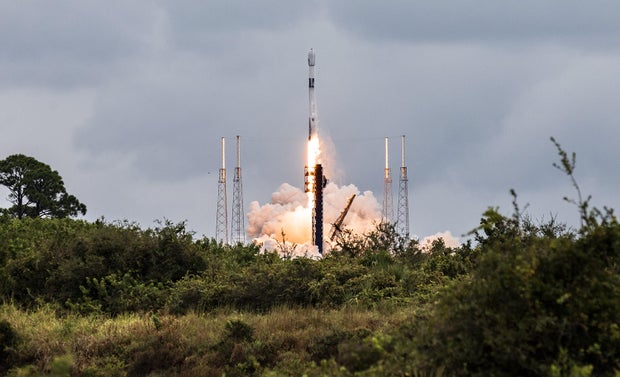
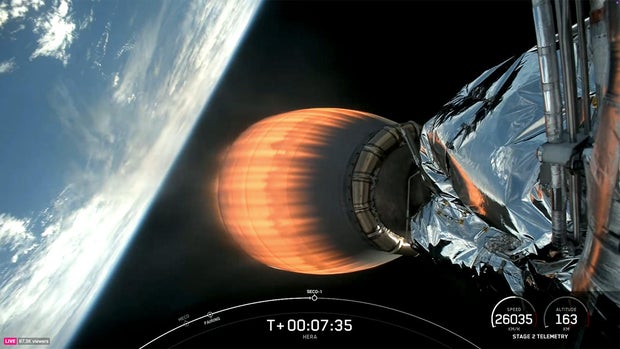
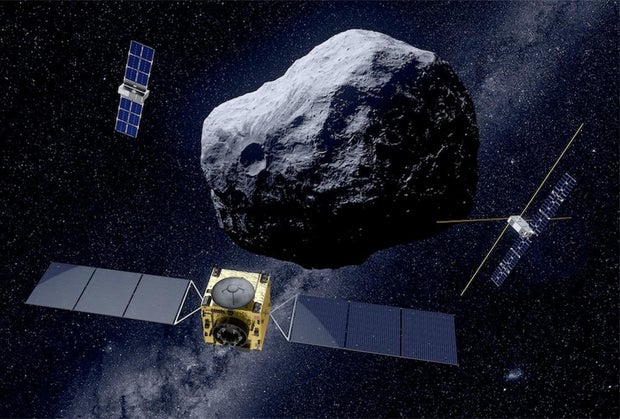
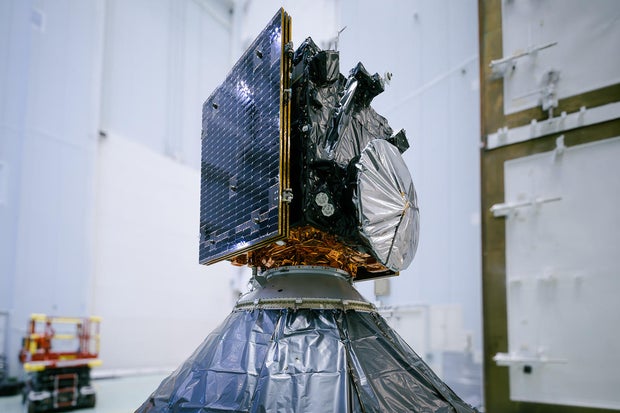
You must be logged in to post a comment Login